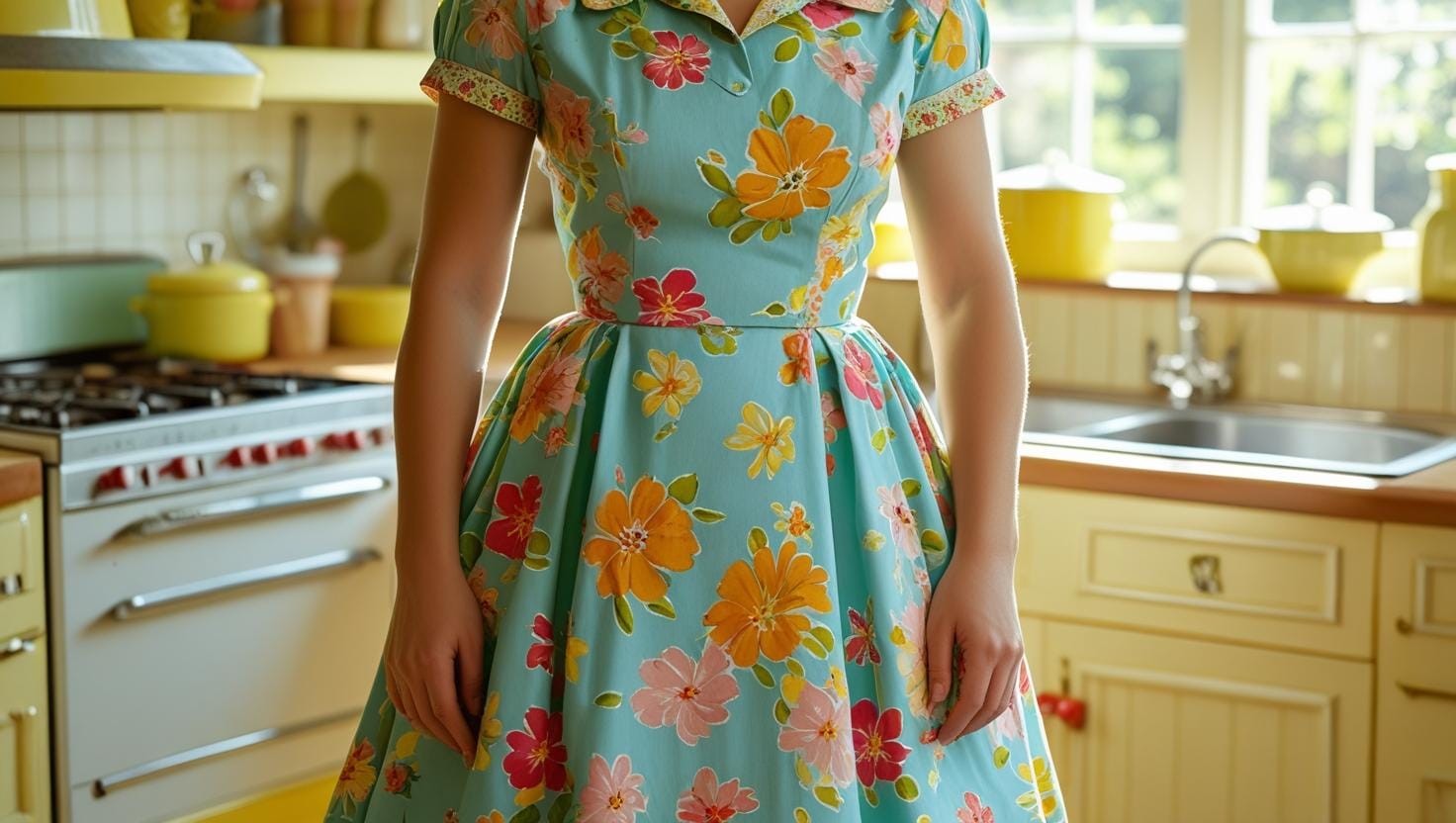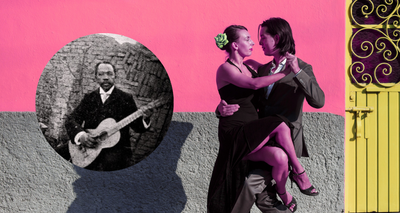The tradwife movement has found a new voice among Latina influencers and content creators dubbed ‘Latina tradwives’ are blending tradition, faith, and digital entrepreneurship to generate thousands of dollars a month while reigniting debates over traditional gender roles and MAGA (Make American Great Again) political agendas in the United States.
What is a Tradwife on Social Media and What is The Motivation?
The term “tradwife” — short for “traditional wife” — has gained massive popularity on social media, where women document lives centered on home, cooking, and family care. Unlike traditional housewives of decades past, these influencers monetize their domestic content, earning substantial income while promoting lifestyles they say prioritize femininity and traditional gender roles.
There are many approaches and perspectives. For some women, being a tradwife is the perfect opportunity to earn money; not all wives are in the same economic situation, and some see creating this type of content as a good business, while others choose to work outside the home.
On the other hand, some enjoy comfortable financial circumstances that allow them to focus entirely on home life — and choose to share it on social media, generating additional income.While white non-Hispanic women, often affluent and religious - Christian or Mormon - popularized the “trad wife” trend and counter culture movement against low birth rates in the United States, what does this mean for Latinas who have long lived in Latin American patriarchal cultures where women are expected to serve men, raise children, and stay home? In Latin America, this ideal is called marianismo. Today, despite complexities that Latinas face, many Latinas are embracing the trend and monetizing traditional roles online. Is this a win-win for Latinas who already hold traditional values, turning cultural expectations into income? Or is it simply another rebranding, an empowerment framed in contrast to today’s neo-liberal Latina “girl boss” who delays family for career?
The Visual Appeal and Aesthetics of the Tradwife Movement
The tradwife movement online, though often idealized and romanticized, presents a conservative ideology wrapped in an attractive aesthetic. Influencers are known for using soft, soothing, maternal voices with a delicate, affectionate tone to deliver their content.
A key draw is the tradwife aesthetic, marked by pastel colors that critics say make its message both alluring and dangerous, capable of completely captivating viewers. The content often features conventionally attractive women living in pristine homes or on farms, wearing either expensive designer couture or milkmaid dresses and aprons, caring for children and preparing meals from scratch all while projecting an idealized image of traditional domestic life. Where does this inspiration draw from?
Inspiration From the 1950s: A Return to Traditional Domesticity

Some women can be seen dressing in outfits inspired by the 1950s, reflecting the life of that era, an effective strategy for captivating audiences.
Life in the 1950s and ’60s carried an idealized view of the home, where women were solely responsible for cooking, cleaning, child-rearing and all aspects of domestic life. Men, by contrast, were the family’s providers and protectors.
The difference between a 1950s traditional wife and today’s tradwives lies in production and productivity. Today’s content features meticulously staged settings, carefully chosen wardrobes, engaging scripts, and polished production, offering viewers a curated spectacle of a woman devoted to home life. At the same time, this content generates income for influencers who have revolutionized the tradwife movement. In many ways, today’s ‘tradwives’ want to revive what once was.
Shifting Attitudes Toward Gender Roles and the New ‘Tradwife’ Media
According to the Pew Research Center’s article “Party affiliation of US voters by gender, orientation, marital status,” there has been a significant shift in Americans’ attitudes toward traditional gender roles. The Views of the Electorate Research Survey found that the percentage of Republican men who support women returning to traditional roles rose from 28% in May 2022 to 48% in November 2024. Among Republican women, support grew from 23% to 37% in the same period. As a result, a new wave of hyper-femininity content is rising.
From digital magazines and zines, all are celebrating traditional gender roles, beauty, and domesticity. Media outlets targeting women from faith-based networks to well-funded conservative far-right content platforms which capitalize on this shift, are pouring money into podcasts, YouTube channels, and influencer sponsorships that promote ‘domesticity’ as a lifestyle brand.
One such far-right media outlet, Evie Magazine linked to Peter Thiel, one of the first Silicon Valley titans to back Trump and founded in 2019 by Brittany Hugoboom formerly Brittany Martinez and her husband. Evie Magazine brands itself as a “conservative Cosmo,” promoting wellness, relationships, and fashion through a lens of “classic femininity” according to an interview with the New York Times. The couple also launched 28, a femtech startup promising to sync fitness and wellness with women’s hormonal cycles—but questions remain around privacy and how this data will be used, especially at a time when period-tracking apps have been criticized as dystopian tools in a post-Roe landscape. Platforms like this do give MAGA vibes and are gaining traction among a majority of young white non-Hispanic women questioning modern feminism or seeking a return to “traditional values.” But the conversation isn’t one-sided, Latinas are also asking how these narratives intersect with our own cultural expectations around mujeridad, family, and independence.
Tradwife Culture through a Latina Lens
Is the tradwife culture just normal with a Latina segment or are influencers/content creators riding a wave adding a Latina spin by highlighting culturally specific elements such as religious values, concepts of family respect, narratives of sacrifice that differ from their Anglo counterparts, and unique parenting models.
Demographic data, however, reveals seemingly contradictory trends. Nearly half of U.S. women (race and ethnicity included) remain single, and when they do marry, 45% are the primary breadwinners or earn as much as their husbands, according to recent PBS statistics. Prior to the 2024 election, U.S. Latinas had so much as stake but also riding the ‘girl boss’ era of "stop asking me when I am going to have kids!” - postponing family till education and career are achieved first. Can today 's U.S. Latina have or be both?
Different Approaches and Perspectives With Three Latina Content Creators

Jime, Ama de Casa - Faith and Tradition in Tradwife Content
Jime, Ama de Casa showcases a life as a traditional Christian wife on her YouTube and TikTok channels, rooted in her faith in God and Scripture. She often teaches other women how to become homemakers from scratch. She said she doesn’t let comments like “The woman is in charge,” “Children are a burden” or “The greatest success is outside the home” influence her — recurring remarks, as feedback to these influencers is not always positive. Still, she makes it clear that she devotes herself to being a full-time homemaker voluntarily, because it is the life she wants.
Her content is full of simplicity, modesty and femininity, with a rural tradwife aesthetic that features long dresses and country landscapes. Religion plays a central role, giving her productions a more conservative tone.
Gabriela Castro: Modernizing the Tradwife Concept
In contrast, Gabriela Castro offers fresher, more updated, and less conservative content. She presents herself as a sensual, feminine Latina who not only tends to the home but also shares her personal care and beauty routines, showing viewers that being a Latina tradwife is not limited to homemaking and doesn’t have to be inherently conservative. The tradwife movement does not define a single stereotype of womanhood but encompasses many types of women — an intriguing contrast to consider.
Lupita Duarte: Monetizing Domestic Life with Lonche
“At 3 a.m., while most people are asleep, Lupita Duarte is already in her kitchen making breakfast and/or lonche, for her husband. “I wake up so early because it’s like a gesture of love. He wakes up every day to work at 5 a.m., and we know it’s not easy to work. Everything’s expensive now. So I said, if I can do something nice to show him that he’s worthy of my time and that I could also sacrifice, why not? It doesn’t take long. I’m home all day,” she told LAist.
Lupita Duarte, 33, shares her morning routine on TikTok, where more than 500,000 followers watch every step of her life as a Latina tradwife.
In a podcast interview hosted by Antonia Cereijido of LAist’s Imperfect Paradise in partnership with NPR’s Latino USA, Duarte said she estimates earning $3,000 a month through TikTok, plus another $500 from Instagram. “You can be a businesswoman but also very feminine and care for your children,” she said. “Still be that old-school woman but with the same power as yourself.”
Day after day, she shows her followers how she prepares meals for her husband and children, completes household chores and shares useful home tips. For Duarte, the purpose of her tradwife content goes beyond views; she says she aims to change the dynamic between women and men, promoting a more traditional lifestyle.
Criticism of the Movement: Regression or Empowerment?
Amy X. Wang wrote in The New York Times on Sept. 8, 2024, that the greatest controversy comes from seeing professional women with successful careers leave the workforce to dedicate themselves fully to the home. In her article “Who’s Afraid of the Big, Bad Tradwife?” Wang noted that criticism often arises when people realize these women’s ideology seems to stem from nothing more than sincere devotion to a hyper-domestic lifestyle — subjecting tradwives to public backlash.
Meanwhile, Gabriela Castro blends beauty, self-care, and femininity with the role of traditional wife, sharing parts of her daily life on TikTok. She also rises at 3 a.m. to prepare her husband’s meals before he leaves for work.
In one of her TikTok videos, Castro said she has received many negative comments about her way of life and the fact that she handles all the household tasks. “‘You do everything,’ ‘He’s like a child who can’t do any of that’ — those are some of the comments I get,” she said, adding that her actions are not an obligation but something she chooses to do, and that she enjoys recording her content.
The Debate Remains: Tradition or Regression?
The phenomenon of Latina tradwives reveals the complexities of contemporary female identity, where tradition, faith, digital entrepreneurship, and economic autonomy intertwine. While some see it as a form of resistance to corporate feminism and a response to the burnout of the “girl boss” model, others interpret it as a regression that perpetuates limiting gender roles.
The numbers speak for themselves: influencers like Lupita Duarte earn thousands of dollars a month documenting their domestic lives, turning traditionally unpaid activities into profitable ventures. This paradox — women monetizing domesticity while promoting economic dependence — illustrates the movement’s inherent contradictions.
The debate extends far beyond social media. It reflects deeper tensions about what it means to be a woman, wife, and mother in an era of rapid transformation.
Ultimately, the tradwife movement raises fundamental questions about freedom, choice, and personal fulfillment. Is it possible to be both traditionalist and entrepreneurial? Can domesticity be a form of empowerment? The answers, like the tradwives themselves, are more complex than three-minute TikTok videos suggest.
—---------
El fenómeno de las tradwives latinas está generando debate: mujeres que adoptan un estilo de vida inspirado en los años 50, dedicadas al hogar y a sus familias, pero con un giro moderno: monetizan cada receta, rutina y momento doméstico a través de redes sociales. Influencers como Lupita Duarte o Jime (@amadecasadesde0) muestran escenarios cuidadosamente producidos, estética vintage y mensajes sobre amor y entrega al esposo, atrayendo miles de seguidores y generando ingresos significativos.
Para algunas, es una forma de resistencia al agotamiento del modelo “girl-boss” y un regreso a valores tradicionales; para otras, es una peligrosa regresión que perpetúa roles de género limitantes. Lo cierto es que este movimiento fusiona tradición, fe y emprendimiento digital, planteando preguntas sobre libertad, elección y empoderamiento. ¿Puede la domesticidad ser un camino hacia la independencia económica? En TikTok, Instagram y YouTube, las tradwives ya están escribiendo su propia respuesta.






